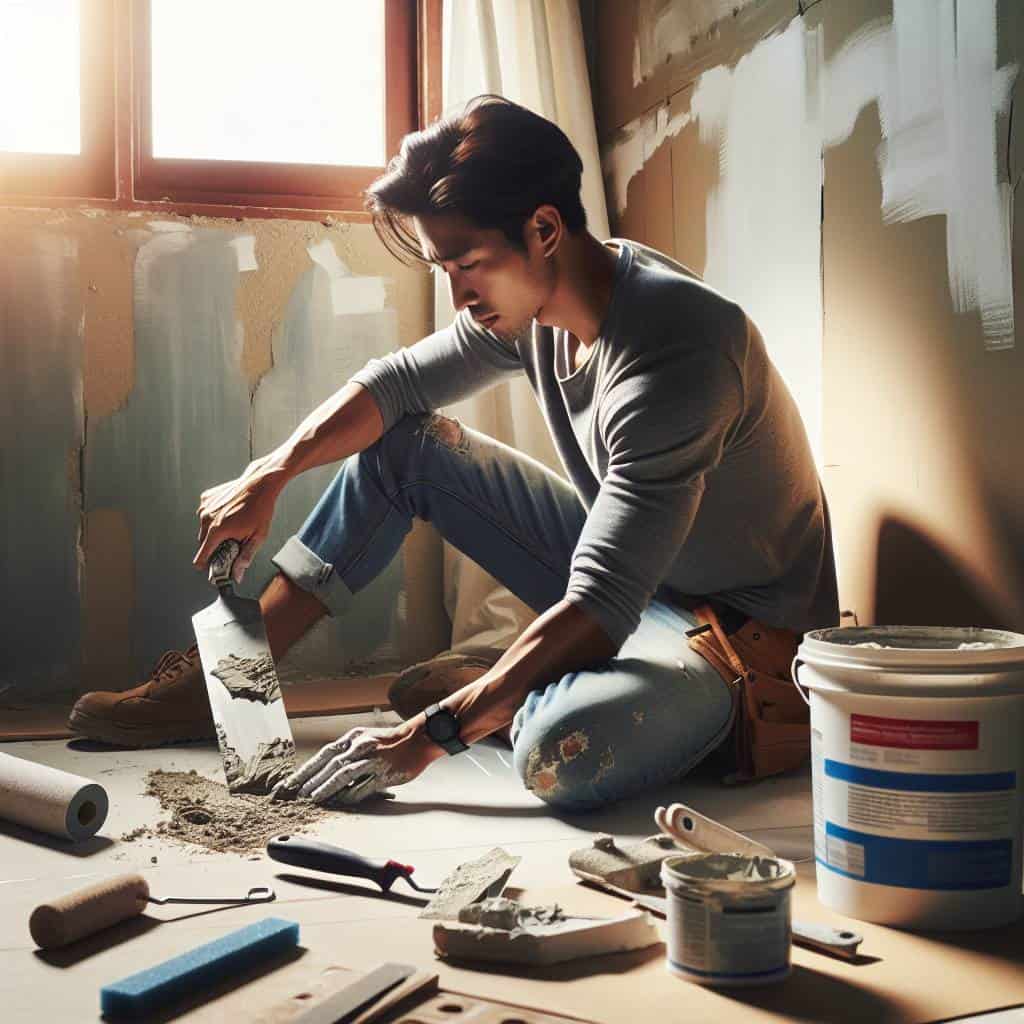I remember the first time I faced a hole in the drywall. It was the size of a grapefruit and stared back at me like a judgmental eye. My initial thought? How hard could it be to patch this up? Spoiler alert: a lot harder than I expected. I armed myself with spackle and sandpaper, full of misplaced confidence. An hour later, I was knee-deep in dust, cursing every life choice that had led me to believe I was the DIY hero of my own story. But hey, what’s a little existential crisis between you and your walls?

Now, if you’re reading this, you’re either in the same boat or smart enough to learn from my mistakes. This isn’t just about fixing that glaring hole; it’s about navigating the labyrinth of plasterboard repair with the finesse of a seasoned mechanic. We’ll dive into the art of spackling, the zen of sanding, and why sometimes, the best tool is a healthy dose of patience. So roll up your sleeves, because together, we’re going to turn that eye-sore into a masterpiece—or at least something you can live with.
Table of Contents
The Day I Realized My Wall Wasn’t Invincible After All
There I was, standing in the middle of my living room, staring at what could only be described as a gaping wound in my once-pristine plasterboard. It was the aftermath of a wrestling match between the couch leg and my overconfidence. I had always thought of my walls as fortress-like, impervious to the chaos of life happening around them. But that day, reality hit me harder than the couch did the drywall. The illusion of invincibility shattered, leaving me with a hole and a healthy serving of humble pie.
Fixing that hole felt like a rite of passage. First, I had to accept that patching drywall wasn’t just a task—oh no, it was a confrontation with my own hubris. Armed with spackle, sandpaper, and more than a few YouTube tutorials, I embarked on the journey. The first swipe of spackle was like a mechanic’s first turn of the wrench—awkward, yet filled with determination. As I layered and sanded, it dawned on me that repairing this wall was like tuning an old engine. Each step was necessary, each part of the process connected, until eventually, the wall—and my pride—were restored.
But let’s be honest, nothing about this was graceful. It was a circus of trial and error, with more sanding than I’d ever imagined. And yet, as I stood back from my finished work, I realized something important. The wall might not have been invincible, but neither was I. And that was okay. Because in the end, it wasn’t just about fixing a wall. It was about learning to patch up life’s little mishaps and coming out stronger—and maybe a bit more humble—on the other side.
The Wall’s Whisper
In the art of patching drywall, the hole is not the enemy. It’s merely a reminder that even the strongest walls sometimes need a little spackle and sanding to stand tall again.
A Patch in the Fabric of Life
As I stepped back from that patched-up wall, a mix of pride and a little disbelief washed over me. Who knew that a handful of spackle and a smattering of sandpaper could teach me more than just how to fix a hole? It was like tinkering with an old engine—every smudge of plaster and swirl of dust carrying a lesson in patience and resilience. I realized that, just like with any good repair job, life’s rough patches require a steady hand and a willingness to get messy. You’ve got to be ready to scrape away the old, smooth things over, and sometimes just stand back and let it all settle.
The wall, once a glaring reminder of my own clumsy enthusiasm, now stood as a testament to my stubbornness too. It wasn’t just about the repair; it was about the journey of learning to embrace imperfections, both in plaster and in life. Each sanding stroke whispered the truth that sometimes, the most valuable things aren’t shiny or perfect, but patched-up pieces of something that once felt broken. It seems life, much like drywall, is best appreciated when you see the beauty in its scars, knowing that each one tells a story of how you found a way to hold it all together.